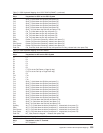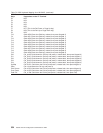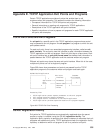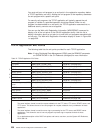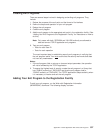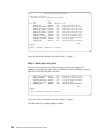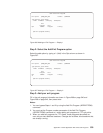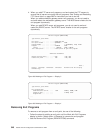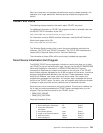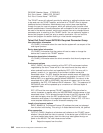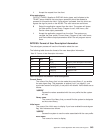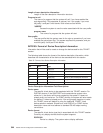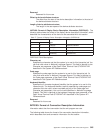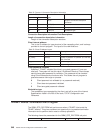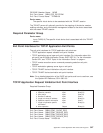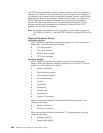
When you remove an exit program that performs a security-related operation, this
operation is no longer performed. Remove security-related exit programs with
caution.
TELNET Exit Points
The following sections describe information about TELNET exit points.
For additional information on TELNET exit programs as well as example code, see
the AS/400 TCP/IP information at this URL:
http://www.as400.ibm.com/tstudio/tech_ref/tcpip/index.htm
For information on other AS/400 technical information, see the AS/400 Technical
Studio home page at this URL:
http://www.as400.ibm.com/techstudio
The Technical Studio contains links to such things as workshops and technical
reference, like TCP/IP and TELNET information. The TCP/IP URL listed above is
located off the Technical Studio’s link for Technical Reference.
The information at these URLs will be continuously updated and expanded.
Telnet Device Initialization Exit Program
The AS/400 TELNET server application includes exit points that allow you to hook
into TELNET’s sign-on and termination logic. You can use the AS/400 WRKREGINF
(Work with Registration Information) or ADDEXITPGM (Add Exit Program)
commands to associate your custom exit program to an exit point. If the TELNET
server finds a program registered to one of the exit points for the server, it calls that
program using parameters defined by the exit point. These parameters include
things like IP address, user name, and virtual device name. Your custom exit
program then processes the information, for example, logs a message and returns
control to the TELNET server. On return, your exit program tells the server whether
to accept or reject this client and any optional user or password overrides.
Each exit point has a name and an exit point interface. The exit point interface is a
list of input and output parameters the TELNET server exchanges with your exit
program. There are two exit points for the TELNET server:
v QIBM_QTG_DEVINIT
v QIBM_QTG_DEVTERM
Required Parameter Group:
1 User description information I/O Char(*)
2 Device description information I/O Char(*)
3 Connection description
information
Input Char(*)
4 Environment options Input Char(*)
5 Length of environment options Input Binary(4)
6 Allow connection Output Char(1)
7 Allow autosign-on Output Char(1)
Appendix E. TCP/IP Application Exit Points and Programs 541



